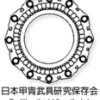Dear Brian,
yes, the set is 20st century. A popular repro set. Easy to recognise, because there are several popping up from time to time. Nice as a display, but no historical value.
in case of historical armors, it is an illusion to do correct restoration yourself, without a serious study of the needed techniques, styles, regions and periods. Also the use of the right materials is paramount. Even choosing the correct size of the silk laces is a serious matter.
restoration can easily turn out into destruction.


